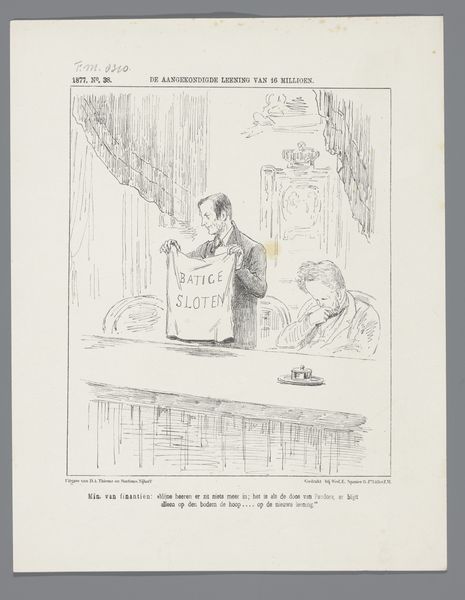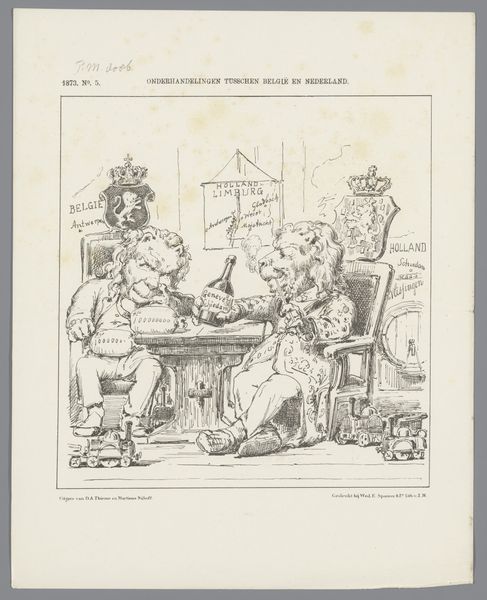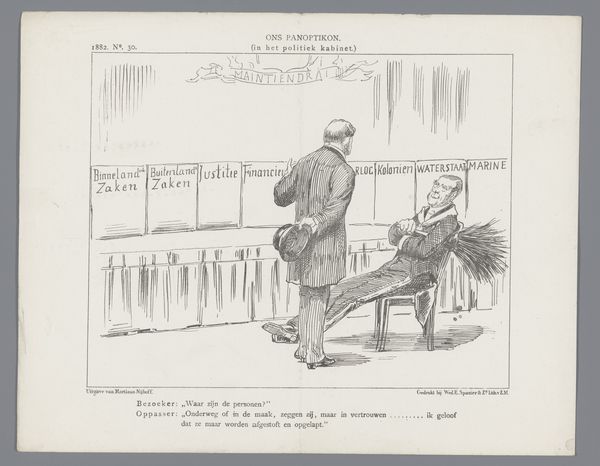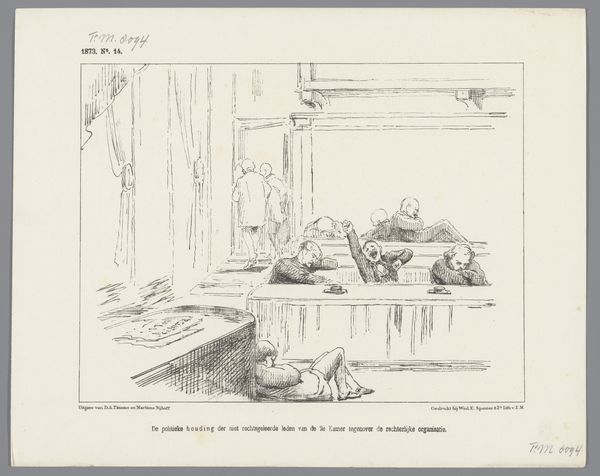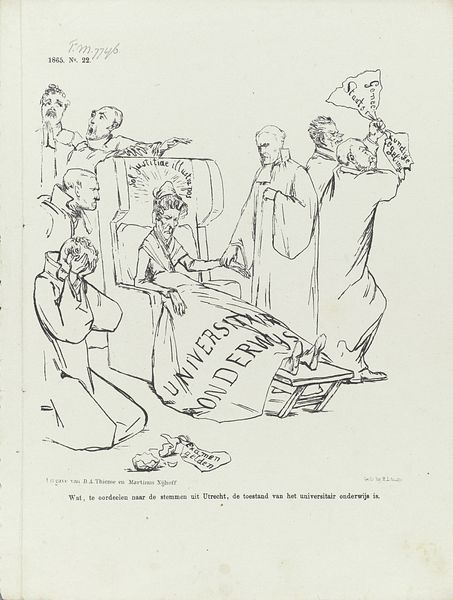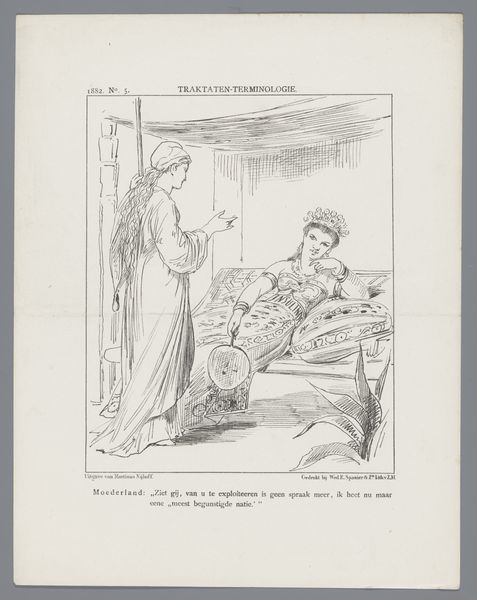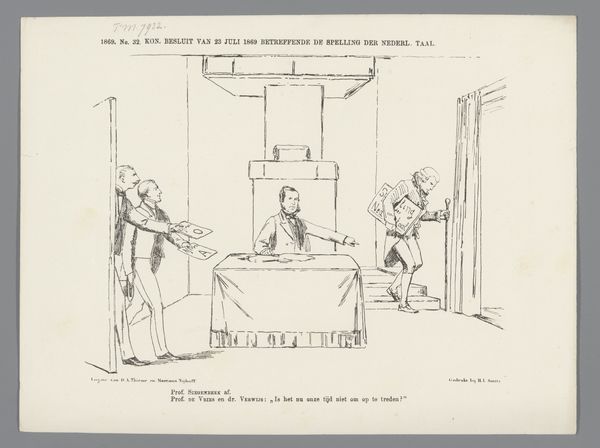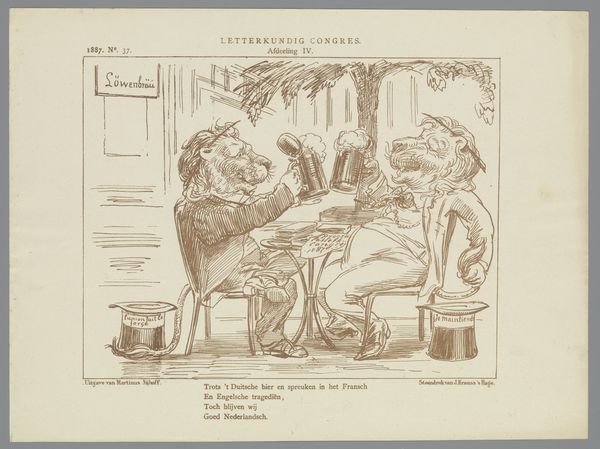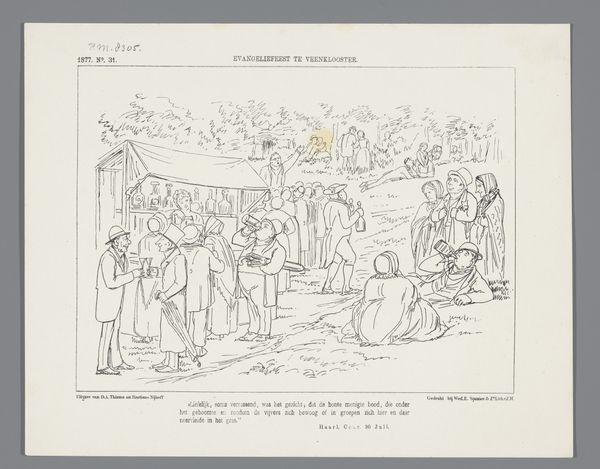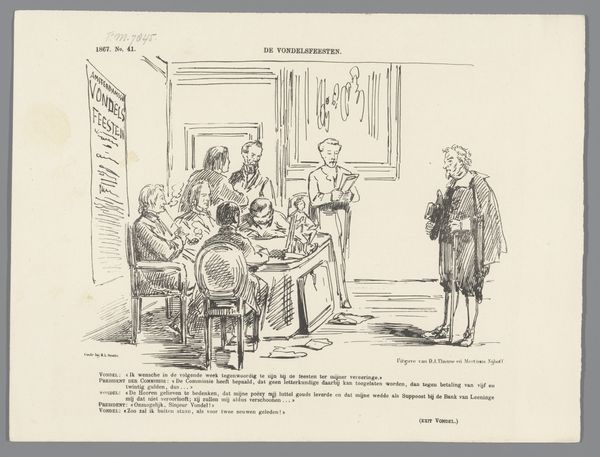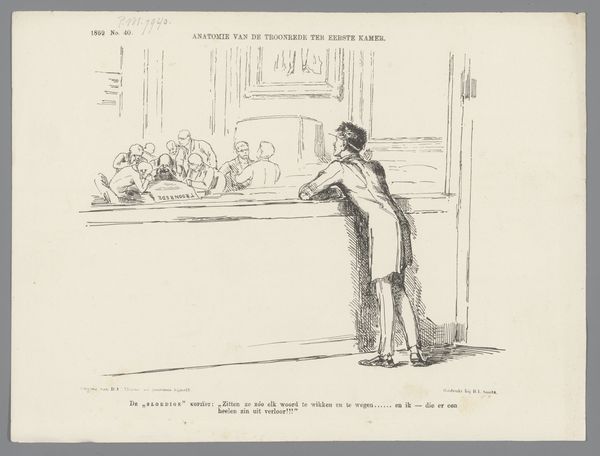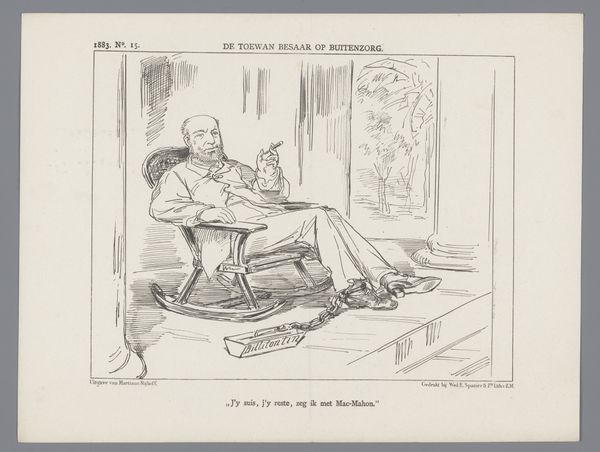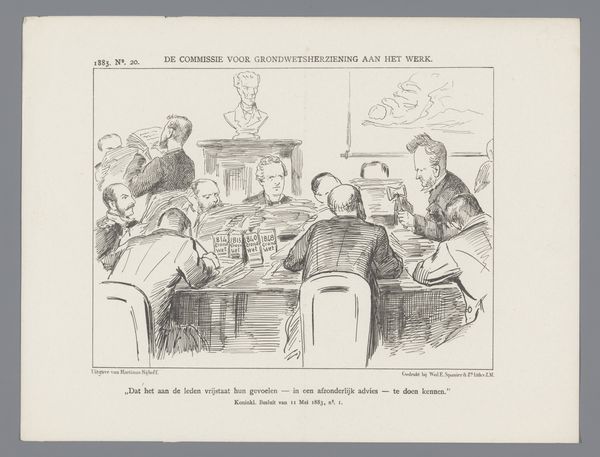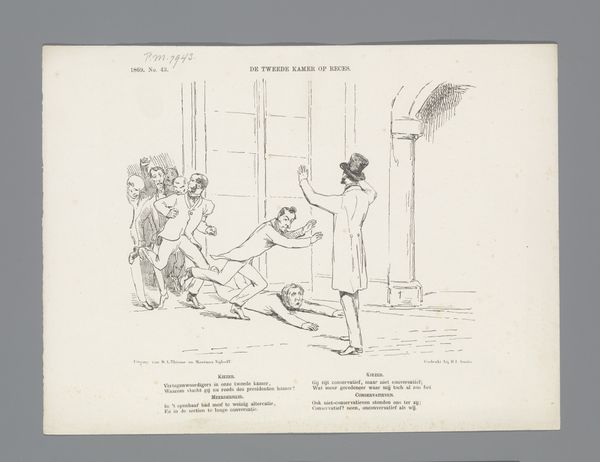
Spotprent nav een tentoonstelling van vrouwelijke kunstwerken te Amsterdam, 1882 1882
0:00
0:00
drawing, print, pen
#
drawing
#
comic strip sketch
#
narrative-art
# print
#
impressionism
#
caricature
#
pen
#
genre-painting
Dimensions: height 215 mm, width 275 mm
Copyright: Rijks Museum: Open Domain
Curator: This drawing, “Spotprent nav een tentoonstelling van vrouwelijke kunstwerken te Amsterdam, 1882,” roughly translates to "Cartoon based on an exhibition of female artworks in Amsterdam, 1882" created by Johan Michaël Schmidt Crans, offers us a glimpse into the art world of the late 19th century. It's executed using pen and printed. Editor: My immediate response is amusement mixed with discomfort. The caricature style emphasizes what appears to be the artist's satirical viewpoint, but it feels pointed, maybe even a little cruel, given the context. The scale and medium are deceptive; the artist seems to want the casual feel of a comic sketch but its satirical aim is very serious. Curator: The setting—an art exhibition specifically featuring works by women—is crucial. Consider the historical context: female artists were often marginalized, their work not taken as seriously as their male counterparts. The artwork reflects societal attitudes about gender and artistic ability. Editor: Exactly. You see the text included translates roughly as "Art has no sex… or have the women segregated themselves with this exhibition in order to show that this is not true??" The question itself is dripping with bias. It points to this perception that perhaps women have isolated themselves to 'prove' something, thus revealing underlying anxiety or challenge to the established (male) status quo. Curator: And that perspective manifests in the artist's depiction. The men seem bored, perhaps critical, while the women are intensely studying the art, maybe overly so, furthering a specific narrative. I see this drawing as a reflection of institutional resistance towards recognizing female talent. Editor: The details – their clothing, the arrangement of the gallery, the inclusion of those plants almost hiding a viewer -- are telling. It feels crowded but somehow insular. Look at those sculptures lined up, it suggests both mass production but also individual artistic expression that seemingly becomes homogenized through this event. The gaze feels exclusionary and mocking, really reflecting the prevailing ideologies regarding women artists during this era. Curator: For me, it’s a strong reminder of the battles fought by female artists and how societal prejudices can be reflected in art about art. Editor: Indeed, and how seemingly simple sketches can unveil complex sociopolitical undertones that continue to be relevant as we work towards inclusive artistic environments.
Comments
No comments
Be the first to comment and join the conversation on the ultimate creative platform.
